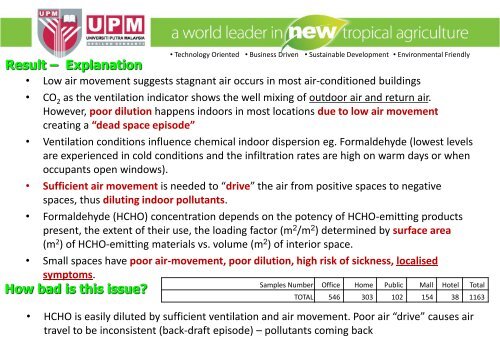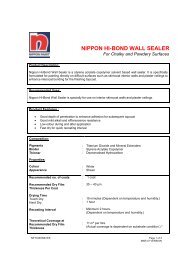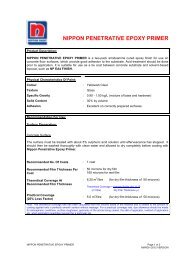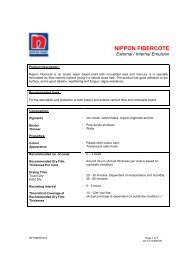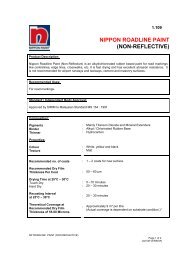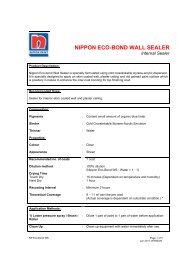Indoor Air Quality - Nippon Paint Malaysia
Indoor Air Quality - Nippon Paint Malaysia
Indoor Air Quality - Nippon Paint Malaysia
Create successful ePaper yourself
Turn your PDF publications into a flip-book with our unique Google optimized e-Paper software.
• Technology Oriented • Business Driven • Sustainable Development • Environmental Friendly<br />
Result – Explanation<br />
• Low air movement suggests stagnant air occurs in most air-conditioned buildings<br />
• CO 2 as the ventilation indicator shows the well mixing of outdoor air and return air.<br />
However, poor dilution happens indoors in most locations due to low air movement<br />
creating a “dead space episode”<br />
• Ventilation conditions influence chemical indoor dispersion eg. Formaldehyde (lowest levels<br />
are experienced in cold conditions and the infiltration rates are high on warm days or when<br />
occupants open windows).<br />
• Sufficient air movement is needed to “drive” the air from positive spaces to negative<br />
spaces, thus diluting indoor pollutants.<br />
• Formaldehyde (HCHO) concentration depends on the potency of HCHO-emitting products<br />
present, the extent of their use, the loading factor (m 2 /m 2 ) determined by surface area<br />
(m 2 ) of HCHO-emitting materials vs. volume (m 2 ) of interior space.<br />
• Small spaces have poor air-movement, poor dilution, high risk of sickness, localised<br />
symptoms.<br />
How bad is this issue?<br />
Samples Number Office Home Public Mall Hotel Total<br />
TOTAL 546 303 102 154 38 1163<br />
• HCHO is easily diluted by sufficient ventilation and air movement. Poor air “drive” causes air<br />
travel to be inconsistent (back-draft episode) – pollutants coming back


